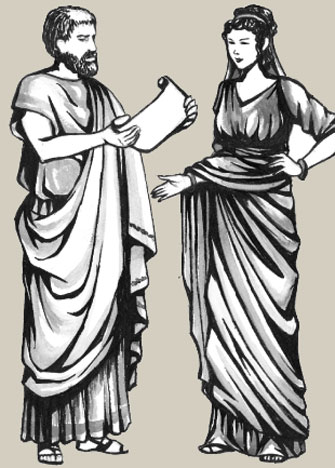
 
The dawn of civilization was a
fitting preamble for the introduction of clothing, but many, many years
ago the Neanderthals, cave dwellers in central Europe wore dried skins
of animals wrapped around their bodies.
In 6500 BC, farmers made woollen cloth from sheep and linen fabric
from the filaments of flax and hemp plants which they twisted to make
rough cloth. Later a simple loom was created and women wove pieces of
material. They wore it around the body fastened to the waist with a
cord.
Flowing robes were worn by the early Egyptians and Greeks. The Romans
also wore a loose garment called the ‘toga’. In 1,500 BC, the Shang race
of China cultivated mulberry trees on which silkworms thrived. Fragile
threads in the cocoons were made into lengths of cloth. The Chinese are
yet famous for ‘shantung’ refined fabric with an irregular pattern and
‘moon cotton’ a lustrous material reflecting pinpoints of silvery light.
They sewed garments with flared sleeves.
It is from them that we learnt the real art of fashioning clothes. In
the 3rd century BC the Japanese acquired a technique of weaving
beautiful designs into satin cloth wonderfully embroided with silken and
metallic strands. These large pieces of brocade were sewn into ‘kimonos’
for noble women like the empress.
Pioneers of the early 19th century who ventured to form new
territories in America made rough cloth at home or bought them from a
roving seller. The reproduction of a painting in an encyclopedia depicts
women purchasing material from a pedlar carrying bolts of cloth in a
horse-drawn wagon.
Eli Whitney invented the ‘cotton gin’ which separated fibres from
cotton seeds and the first cotton mill was setup to manufacture simple
clothing for working-class people.
During the Industrial Revolution, the iron needle and water powered
machine for spinning and weaving were invented for factories. Barthelemy
Themonnier made the first machine (1830) and Issac Singer improved on
it. Today we have high speed machines with laser beams which turn out
computer controlled and sewn garments in large quantities.
Indeed we have come a long way from the era in which people wore
barks of trees, palm leaves and animal skins.
Caryl Nugara.
|

